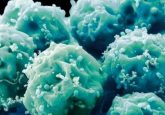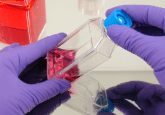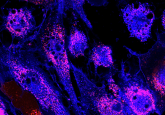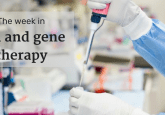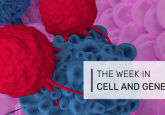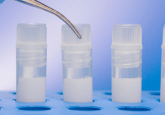Promoting change in cell and gene therapy: an interview with Kathie Schneider
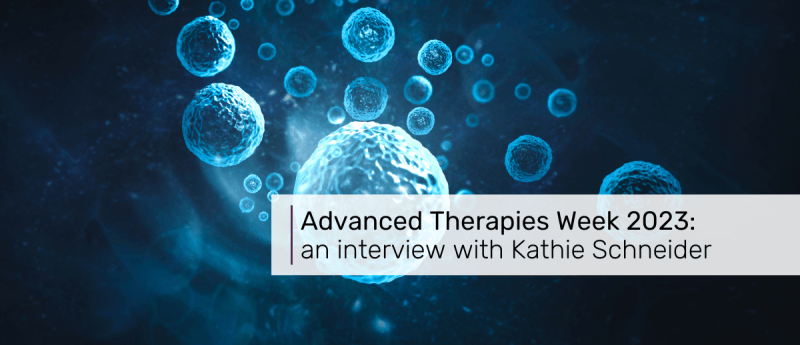
 At Advanced Therapies Week 2023 (17–20 January 2023; Miami Beach Convention Center; FL, USA), we caught up with Kathie Schneider (Director, Global Commercial Lead with Terumo Blood and Cell Technologies; Terumo BCT; CO, USA) to discuss the challenges associated with cell and gene therapies and considerations to make when creating guidelines for this field.
At Advanced Therapies Week 2023 (17–20 January 2023; Miami Beach Convention Center; FL, USA), we caught up with Kathie Schneider (Director, Global Commercial Lead with Terumo Blood and Cell Technologies; Terumo BCT; CO, USA) to discuss the challenges associated with cell and gene therapies and considerations to make when creating guidelines for this field.
Terumo Blood and Cell Technologies is a medical company that focuses on taking the power of blood and cells and optimizing them to unlock their potential to help enable different therapies.
What were some of the key takeaways from the panel you spoke on?
I participated in the International Society for Cell & Gene Therapy’s commercialization series and was on the panel discussing tradeoffs between guidelines in manufacturing or developing standards as next-generation therapies emerge. One aspect of this discussion focused on whether working towards guidelines would lock in certain technologies, which may then exclude other technologies as the field further advances manufacturing tools. Or would it be more appropriate to work towards guidelines that allow some flexibility and innovation, to continue to help elevate the sector to get more therapies to patients? There are many components to this discussion and breaking these components down to smaller pieces, and working with society groups, like the Standards Coordinating Body, to start writing down what these guidelines could look like is the best first step.
What are some of the challenges associated with the development of cell and gene therapies?
Manual labor is a continuing challenge in the development and manufacture of cell and gene therapies. These manual efforts can increase risk and cost. Automation can help solve this challenge and bring substantial benefits. One key example is in the cell expansion step – one of the more labor-intensive steps. We just launched our Quantum Flex Cell Expansion platform, which features two different size bioreactors giving developers flexibility in scaling from process development to commercialization. Using the smaller bioreactor enables manufacturers to use smaller volumes and learn their process within a similar system before moving to larger scale development.
Another big challenge is solving procedure deployment across multiple systems in the developer’s cleanroom. Terumo Blood and Cell Technologies helps solve for this with fleet management software, enabling customers to manage multiple systems by deploying protocols in one step to those systems. This benefits by limiting keying errors that may occur when manually deploying processes on each system or smaller subsets. Our focus is finding ways to simplify our customer’s processes while maintaining or improving their biology.
How do you promote change in the cell and gene therapy landscape?
It is really through working with our customers to understand their challenges and finding improvement opportunities.
One of the unique things about Terumo Blood and Cell Technologies is our leadership in apheresis. Spectra Optia is one of the leading systems for therapeutic apheresis and also cell collections, an important first step in many cell therapies. We work together with clinicians to find ways to optimize that cell collection to help improve success in manufacturing
We carry this approach through cell therapy manufacturing with the Quantum Flex system for cell expansion and FINIA for fill/finish. When we looked at the industry and spoke to customers, to identify the most challenging steps, we found it was at expansion and fill/finish. Fill/finish is still a very manual process for many. When customers finally get their therapy all the way through the manufacturing process, they don’t want to fall down at the last part of that process. So, we automated fill/finish to split those doses for clinics or for biotechs so that they can get the dose they need, which is aseptically sealed, in order to get to the next stage of getting the therapy to the patient.
We already discussed some of the advantages of Quantum Flex. After listening to our customers, we improved on our previous generation of Quantum, including many commercial-ready manufacturing enhancements such as no need for pre-culture, two sizes of bioreactors, and fleet management, including alerts.
What are you most looking forward to at Advanced Therapies Week 2023?
It’s awesome to finally meet in person again and explore all the new types of innovation that have come into this market and learn about recent advancements, whether it’s gene editing or different types of gene therapies in addition to cell therapies. The progress we have made is exciting and will feed future advancements to serve more patients. Even talking with other suppliers and learning about their advancements means we can move this whole industry forward together.
Disclaimer
The opinions expressed in this interview are those of the interviewee and do not necessarily reflect the views of RegMedNet or Future Science Group.
